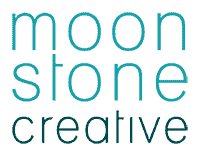Congratulations on writing your first book. What’s next? Contact a publisher? Or, maybe try your hand at self-publishing?
Self-publishing has been around for centuries but is increasing in popularity because it allows the author to retain control. There are many benefits to self-publishing a book, and some of these include:
- Faster publishing time,
- Maintaining creative control over design and layout, etc.
- More profits in your pocket.
But where do you start with self publishing a book? Here are a few things I’ve learnt along the way which may help, and give you a headstart.
ISBN and barcode
What is an ISBN?
An ISBN will allow your book to get discovered and as a consequence, purchased by avid readers. It’s a unique identifier for your book, including the edition, format (say ebook, hardcover or audiobook for example) and the publisher.
Why do you need an ISBN and where do you get one?
Purchasing an ISBN ensures your book is able to be
- found and purchased,
- purchased by retailers (most require an ISBN),
- marketed and distributed,
- listed in the Books in Print database, consulted by publishers, retailers and libraries around the world, and
- tracked and analysed for sales data.
To ensure your book is represented accurately, purchase your ISBN from THORPE-Bowker. Thorpe-Bowker is the official ISBN agency in Australia and you can “Add to your Cart” directly from their website.
Let me know if you’d like any additional help with this, as it’s important to get this right first time.
Prepublication form NLA
The National Library of Australia provides a free service for Australian self publishing authors called the Prepublication Data Service. It provides your book with exposure, and potential future sales, by getting your book details out to the industry early, prior to publishing. You are able to make the details of your book available to Australian libraries, library suppliers and the book industry at large. There is an Eligibility Criteria to have your book listed however, once again, feel free to contact me for help.
Typesetting
Have you seen images from manual print typesetting days? The one letter per metal block days? Fortunately we have moved on from these artisan (or some may say archaic and manual) ways. The rules do remain the same and are just as important today using digital technologies as they were back then. Here are a few things to consider:
Font
Font choice can be the difference between a book not being able to be put down and a book not being able to be read for more than 5 minutes. Serif fonts (like Times Roman for example) have a decorative stroke (the serif) on the end of each letter. This makes it far easier on the eye than Sans Serif (without the stroke) fonts as the stroke is designed to lead the reader to the next letter, without you even knowing it. Stick with a Serif font and your readers will thank you for it.
Margins
Ensure that you don’t skimp on the margins, particularly making allowances for any book binding. White space can make the pages easier to read, allowing the reader’s eye to move comfortably around the page. It also ensures that you have plenty of space for any cropping which may occur in the book binding process.
Layout
The layout of the book includes and is not exclusive to:
- Chapter Heading design
- Layout of photos and images
- Header and footer layout
- Tables and indexes
- Lists and bullets
- Front and Back matter, including dedication pages and call to action pages.
Factors which may affect the layout of the book will depend on the type of book being published and the book size.
Distribution
As a self publisher, there have never been so many options available to distribute our books and get them into stores and libraries, both in person and online. Some options include:
- Ebooks – using a combination of direct distribution with retailers and a distribution service will allow you to filter into the marketplace, while ensuring you retain control and a decent percentage of your profits.
- Print – utilising print on demand technology will give you flexibility and will minimise your upfront investment in books and storage.
Promotion
Here are 4 ideas to get your self published book into readers hands:
- Your own Author Website. It gives you your own piece of virtual real estate where you can provide potential future collaborators or investors somewhere to find information about you and to make contact.
- Book Reviews. Actively encourage and ask for genuine reviews of your book. The more reviews you have of your book at the place of purchase (Amazon, for example), the more success you will have.
- Social Media. Having your own social media presence is free and only takes time, so you should make the most of it. You don’t need to have a presence on each social media channel though. If your book’s ideal market spends most of their social time on Instagram, then you should spend most of your efforts there. Don’t waste time networking where your customers are not.
- Pre-Sale. You should market your book as soon as possible. You can market the release date, the pre-release date, the writing and editing processes. Tell your customers about your book regularly and invite them along for the journey and they’ll be ready to buy as soon as you are ready to sell.
There has never been a better time to write that book you’ve been wanting to write and have it published. Let me help you along the way.
